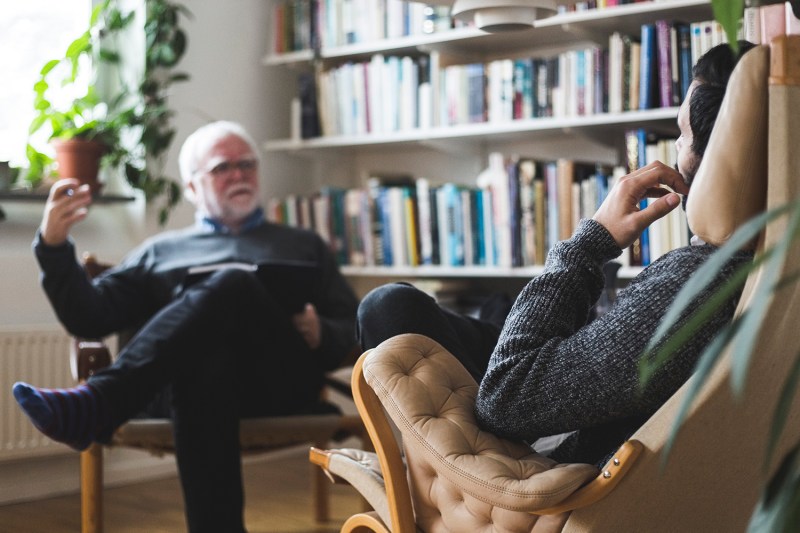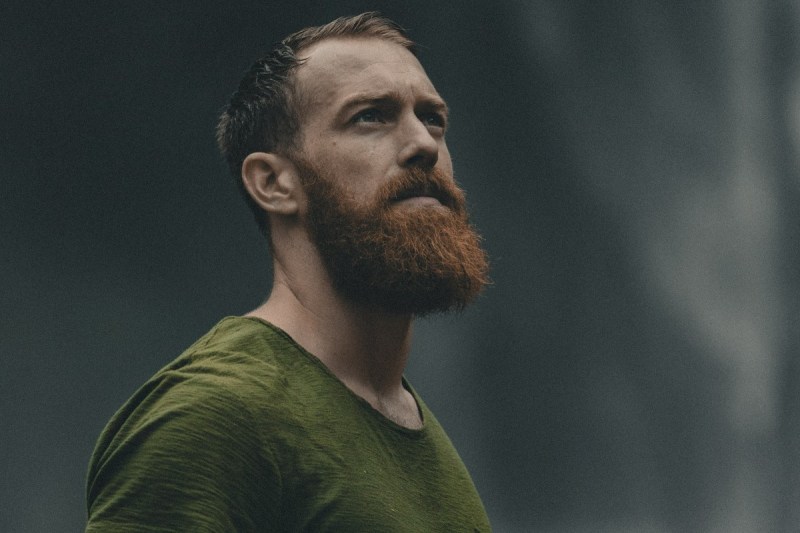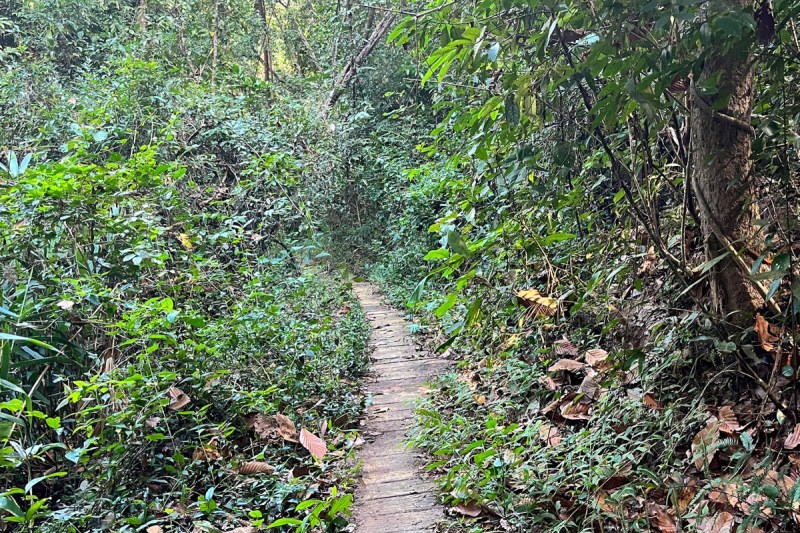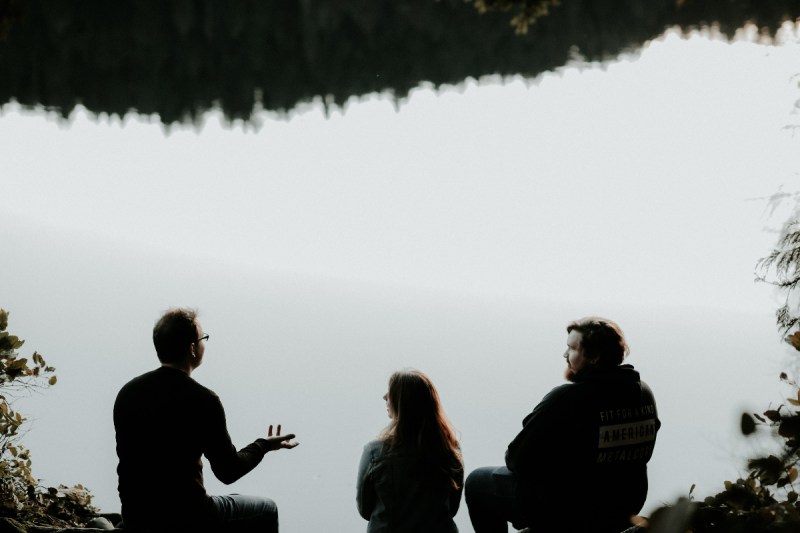
Psychedelic therapy isn’t a fringe movement anymore — plenty of research is being done on the potential benefits, and more and more people are considering it as an option for their mental health. However, even under the supervision of a professional, bad trips can happen.
So you’ve taken psychedelics like psilocybin mushrooms, LSD, or — far less likely to cause an adverse reaction, but hey, stuff happens — MDMA or DMT, and suddenly things start to feel … wrong. Your thoughts are whirling, perhaps dragging you into deep, dark places you don’t want to (or perhaps simply aren’t ready to) explore. The visuals are too overwhelming, and whatever you’re seeing is too much to handle. Maybe you’re even starting to feel paranoid to an extreme, potentially dangerous level. You feel like you’re going crazy, or maybe even dying.
Don’t worry — you’re just having a bad trip.
While you might hope to come down from the drugs and end the trip altogether, the fact is that once the substances are in your body, there’s nothing you can do but buckle up and ride them out. There are, however, several things you can do to manage a bad trip when the situation becomes too extreme for comfort.
What psilocybin does to your brain
Before we look at bad trips, it can be helpful to have some idea of what’s going on biologically when you ingest psilocybin.
In a nutshell, psilocybin supercharges your brain receptors for serotonin, making it significantly easier for your brain to jump and draw connections between different, sometimes seemingly unrelated tasks and stimuli. This instigates a state of what is called “neuroplasticity” by which your brain builds new synaptic pathways, creating novel opportunities for processing information.

Bad trips are actually good
The first thing you need to know is that bad trips, though difficult, can be — and usually are — an ultimately positive experience. In a way, this is where the “therapy” in psychedelic therapy comes in. It’s when you’re “doing the work” of confronting some hidden psychological trauma or burden.
I’m not just saying that. Extensive research has been performed on bad trips, and the vast majority of those who take psychedelics and experience a so-called “bad” trip describe it as being beneficial in the end.
In one study, for example, while 39% of participants rated the experience among the top five most challenging of their lives, 84% of participants said they benefited from the experience, showing lasting positive psychological changes over the long term. This outcome has been reproduced across multiple studies.
So what’s the takeaway? When going into the experience, realize that difficult or “bad” thoughts or feelings may arise, but be aware that this is all part of the healing process.

Preparation
In the aforementioned study, researchers concluded that negative or distressing outcomes are significantly reduced when patients are properly screened, prepared, and supported. This, in other words, means going into the situation under what is called the right “set and setting.”
“Set” refers to you as an individual. If you’re currently experiencing an acute level of mental distress or physical illness, or if you have a history of psychosis, experts recommend that you either wait to take psychedelics until you’re in a better mental state or avoid them altogether.
There are things you can do to prepare your “set,” like educating yourself about the psychedelic experience, calming your mind and body through practices like yoga or meditation, or talking with a therapist or guide before the experience.
“Setting” refers to the physical space in which you take the drugs. You can maximize the potential for a positive experience by:
- Taking psychedelics in a location that is physically and legally safe.
- Being in the company of supportive people, such as a trained therapist or guide, or friends who are in the proper “set.”
- Surrounding yourself with comforting material necessities, like art, flowers, spiritual tokens, pleasing decor, fruit or other simple foods, etc.
With proper preparation, you both reduce the likelihood of a negative experience and make it more manageable in the event that it does arise.

Lean into the trip
Once you’re on the drugs, if a psychologically difficult situation does arise, remind yourself that this was possible, if not likely — and then lean into it. Embrace the challenges because this is what you’ve come here for.
If you’re confronted with a scary thought, memory, or symbol, ask yourself why it’s so frightening. Instead of avoiding it, tackle it head-on. Not only will this make it less difficult in the moment, but it will provide the greatest potential for you to enjoy lasting benefits after the experience.

Change your setting
Here’s the thing about people on psychedelics: They’re easily distracted. If the situation becomes overwhelming, you can often snap yourself out of it with a simple change of setting.
If you’re inside, go outside and take a walk — as long as it’s legally safe to do so. It can be particularly helpful to go into a natural space, even if it’s just a porch overlooking a tree or small garden. If you’re already outside, maybe it’s time to take a break inside.
Change the music, or put some on. Eat an orange. Switch rooms. Sometimes it can be as simple as shifting the direction you’re facing.
Whatever the case, give your mind a new setting to explore.

Talk — or don’t
If you’re having a hard time, let those you’re with know. Maybe all you need is a bit of empathy or even humor — tripping people are hilarious. Maybe you just need to admit to your fear and get it out of your head.
Perhaps you’re already talking with your therapist, and it’s not helping. In this case, perhaps you need a break from other people. Let them know that you’d like a moment of quiet or some time alone in a different room.
Or hey — just go to the bathroom. It can be relieving in more ways than one.

Sing
This one is pretty simple. It’s very difficult to maintain a bad trip while singing. It doesn’t matter if you sing well or poorly — just sing. Works every time.

Take control of the narrative
As one study has shown, one of the most powerful things you can do to manage your experience involves shaping the narrative. This starts both before and after the trip.
Beforehand, do some mental preparation by considering what you hope to achieve. Set a “goal” for the journey, even if it’s something vague. Go into it knowing that this is part of your story, and it’s a story that you’re writing
Afterwards, it’s time for what’s called “integration.” In a psychedelic therapy session, integration tends to have a somewhat structured format involving talk therapy, journaling, writing letters to yourself or another person (whether you intend for them to read them or not), and a range of other practices.
Outside a traditional therapeutic setting, integration tends to be more intuitive. Talk about the experience with your friends. Tell the story of your psychedelic adventure. Journaling is always a great idea. Meditate or perform yoga. Create art. In other words, do something to process the experience and draw meaning out of the thoughts, memories, visions, and symbols it inspired.
A “bad trip” might be difficult, but it’s usually rich with potential lessons. The more you can explore and learn from those lessons, the more value you’ll extract from the challenges you’ve faced.
Editors' Recommendations
- How to watch MLB and MLS games free all season long
- Sling TV packages: Here’s how much the service costs
- Why you should start pouring more into your 401k and IRA
- 19 classic books everyone should read (or reread) at least once
- Cigar humidor 101: What they are, how they work, and our top picks




